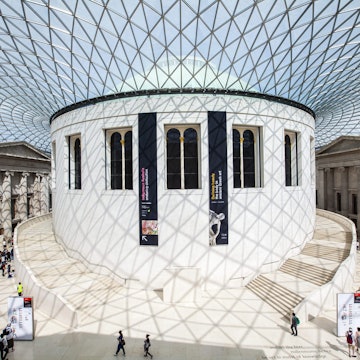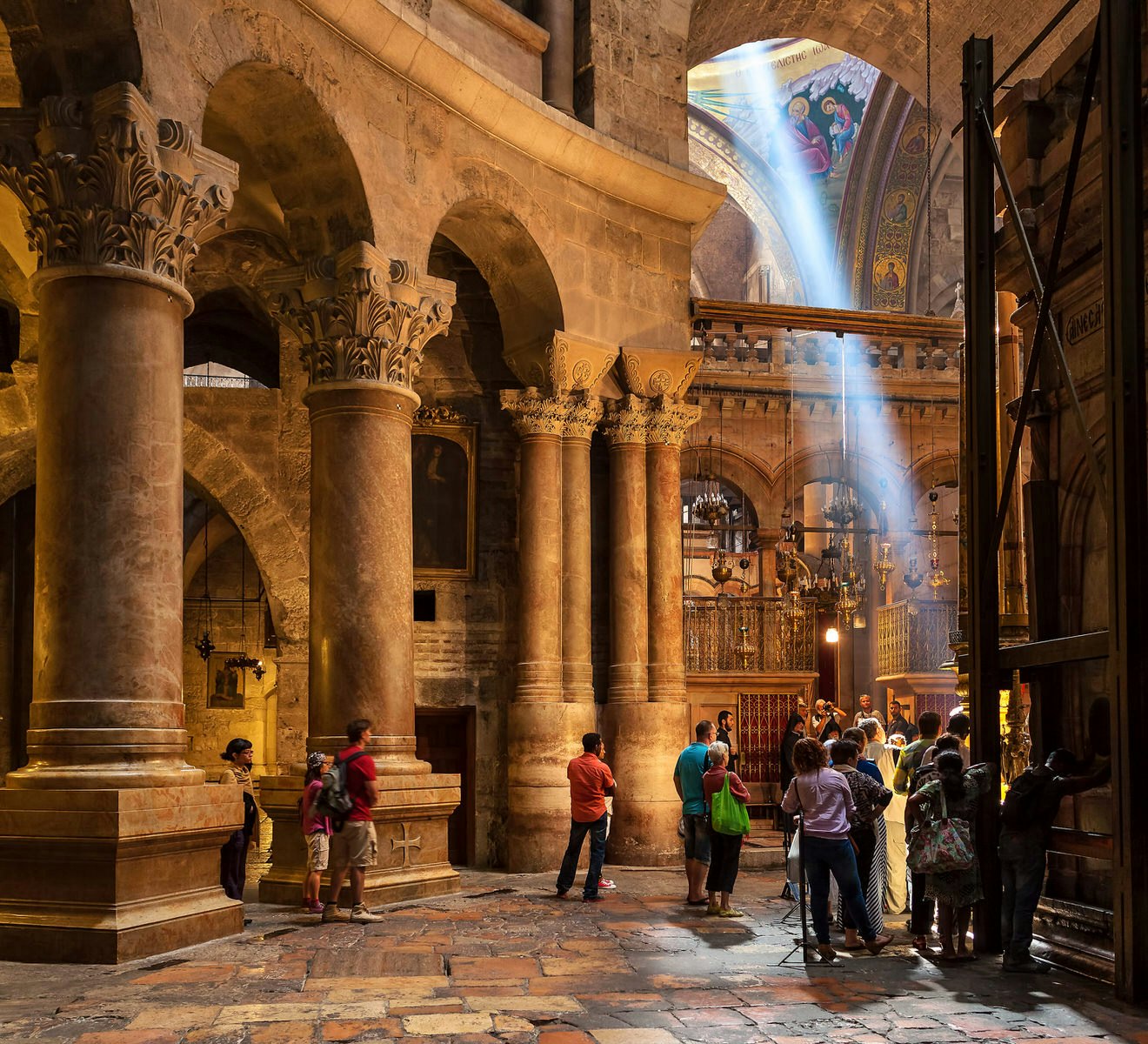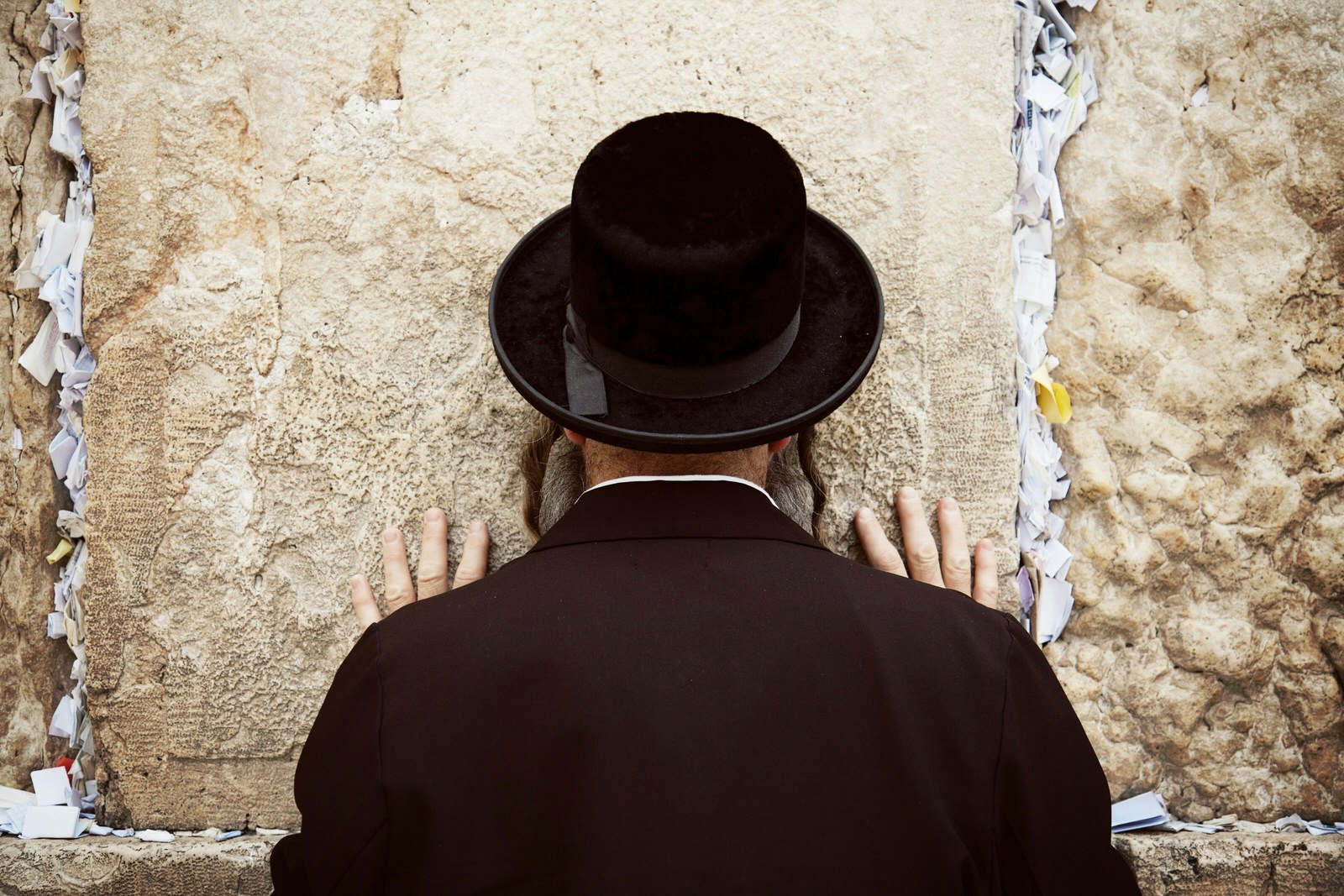
First time Jerusalem: top tips for your first visit to the Holy City
Aug 4, 2015 • 6 min read

Jerusalem seen from the Mount of Olives after Sunset
Sacred to Jews, Christians and Muslims, Jerusalem’s Old City is one of the world’s foremost pilgrimage destinations. It’s also one of the most magical – and disputed – places in the Middle East. If the description ‘living history’ truly applies anywhere in the world, it applies here.
But the Old City isn’t the only attraction in town. In the modern part of Jerusalem are museums, memorials and markets to visit, as well as a thriving cafe, bar and restaurant scene to investigate. Together, the city’s old and new sections offer an irresistible destination for travellers.

Temple Mount/Al Haram Ash Sharif
Few places on earth are as religiously significant as Temple Mount/Al Haram Ash Sharif. Located on the southeastern edge of the Old City, this elevated cypress-planted plaza is revered by Jews as the location of the First and Second Temples, and is also home to two of Islam’s most sacred buildings: Al Aqsa Mosque and the shrine known as the Dome of the Rock. Security officers ensure that entry to the mosque is for Muslims only, but all visitors can wander around the plaza and admire the perfect proportions, tile-encrusted exterior walls and glittering gold roof of the shrine.
Top tip: Arrive early (the site opens at 7.30am in the summer and 8.30am in the winter) to be sure of getting in, dress modestly (no shorts) and bring your passport for the security check.

Christian Quarter
There haven’t been too many changes in this ancient part of the city since Helena, mother of Roman Emperor Constantine, came to Jerusalem in 326 CE, looking for Christ’s crucifixion site. The signature sound of the narrow streets, home to 4500 residents drawn from 20 different Christian denominations, is still the sonorous chime of church bells; the defining smell is the heady whiff of incense crossed with the mustiness of millennia. The quarter’s greatest attraction is Christendom’s most holy structure, the Church of the Holy Sepulchre, built at Helena’s behest to sanctify the place where she – and subsequently billions of Christians – believed Christ was crucified and entombed.
Top tip: Visit just after opening (5am summer, 4am winter) or in the hour before closing (8-9pm summer, 7pm winter) to avoid the crowds.

Jewish Quarter
The massive stone blocks of the Western Wall are Judaism’s most holy prayer site and an important place of worship – Jews believe the wall once supported the Second Temple, destroyed by the Romans in 70 CE. Nearby, the Jerusalem Archaeological Park & Davidson Centre offers a fascinating peek into the area's history.
Top tip: Photography is forbidden in the Western Wall plaza itself, but you can take photographs from the viewing platforms in the alleys between the plaza and Hurva Sq.

Muslim Quarter
A microcosm of the Middle East, this colourful quarter starts at bustling Damascus Gate on the edge of Arab East Jerusalem and is centred along the narrow mercantile strips of Al Wad Rd and Souq Khan Al Zeit St. Purchase aromatic spices, sample delectable Arabic sweets and admire the handsome, though sadly deteriorating, facades of palaces, tombs and caravanserais (ancient inns for travellers) built by the Mamluk rulers of the city between the 13th and 16th centuries.
Top tip: If you are here around lunchtime, head to Jerusalem’s best loved hummus joint, Abu Shukri, for a bowl of tangy tahini-laden hummus accompanied by crispy falafel. Follow it with a tea or coffee at the beloved Abu Musa's Cafe.

Armenian Quarter
The Armenian Quarter’s 1500 residents are the only remaining representatives of a community that has been in Jerusalem for nearly two millennia. Visitors can join them for a service in the 12th-century St James’ Cathedral and afterwards head to the Citadel at Jaffa Gate, which is now home to the impressive Museum of the History of Jerusalem.
Top tip: If you liked the cathedral’s tiles and would like to purchase something similar to take home, head to the Sandrouni Armenian Art Centre in the neighbouring Christian Quarter.

Mahane Yehuda Market
Crammed with fresh fruit, olives, nuts and vegetables, open-air Mahane Yehuda Market is a foodie's paradise. Come here to source spices, tea, cheese, dried fruit, tahini, bread and pastries or watch the daytime action from one of the cafes and return after sunset when the market is the centre of Jerusalem's hipster bar scene.
Top tip: Two exciting restaurants in the market precinct are Yudale and Machneyuda. Arrive early (6.30pm) to score a bar stool at Yudale or book well in advance for a table at Machneyuda.
Israel Museum
You’ll need to devote at least half a day to exploring the magnificent Israel Museum. Marvel at the treasures in the Archaeology wing, be fascinated by the displays in the Jewish Art & Life wing, wander past sculptures in the art garden designed by American-Japanese artist Isamu Noguchi and come face to face with the Dead Sea Scrolls in the purpose-built Shrine of the Book pavilion.
Top tip: Take advantage of the complimentary audioguide, and consider lunch in the museum’s excellent restaurant, Modern.

Yad Vashem
Spread over 16 pine-scented hectares of the Jerusalem forest on the western edge of city, Yad Vashem is a moving and powerful memorial to the six million Jews killed in the Holocaust. Yad Vashem means ‘A Memorial and a Name’ and one of the most heart-wrenching exhibits here is the Hall of Names, where the personal details of millions of victims are recorded. Another poignant section is the Children’s Memorial, a dimly lit underground cavern containing a solitary flame reflected infinitely by hundreds of mirrors.
Top tip: The memorial is easily reached on the Jerusalem Light Rail (JLR); alight at the Mt Herzl stop.
What to pack
Good non-slip walking shoes – the Old City can only be explored on foot, and many of its paving stones are worn and slippery.
Headscarf or shawl – in some religious buildings, women are required to cover their heads.
Long trousers or skirts – shorts and miniskirts are not acceptable attire in many mosques, churches and synagogues, or at Temple Mount/Al Haram Ash Sharif.
Where to stay
Those seeking atmospheric lodgings should consider staying in one of the religious guesthouses in the Old City or East Jerusalem. The best of these are Christ Church Guesthouse, Austrian Hospice, Lutheran Guest House, Ecce Homo Pilgrim House and St George’s Guesthouse. For more comfortable options, stay downtown, where the majority of Jerusalem’s cafes, restaurants and bars are located. Atlas Hotels offers good midrange boutique choices.

Getting around
To take advantage of Jerusalem’s bus and light rail network, purchase an ‘anonymous’ Rav-Kav smart card for 5NIS from the Egged public ticketing office at the Central Bus Station or from any bus driver. Load it with a certain number of rides (6.90NIS each, or 10 rides for 55.20NIS). Download the Moovit app for help with navigating public transportation.
Getting to Jerusalem from Ben Gurion Airport
From Ben Gurion International Airport, sheruts (shared taxis) can take you to any location in Jerusalem, and they operate 24 hours a day, charging 64NIS per passenger. Look out for them in the rank in front of the international arrivals hall. An hourly bus also goes back and forth from Ben Gurion to Jerusalem Central Bus Station for 16NIS. To book a sherut to the airport, call Nesher Service Taxis. The bus cannot be booked in advance. If you’re going to the airport on a Friday, make sure to book with Nesher in advance.
Last updated August 2018













